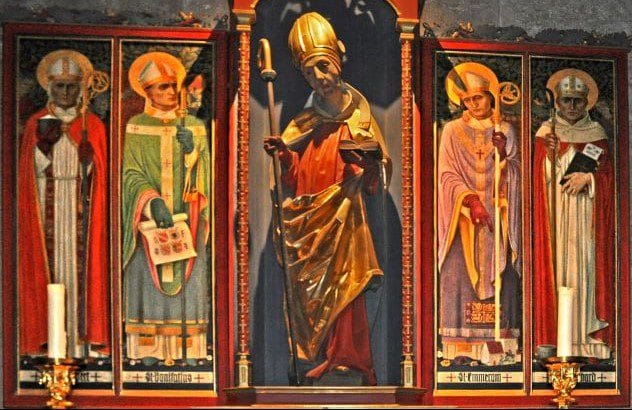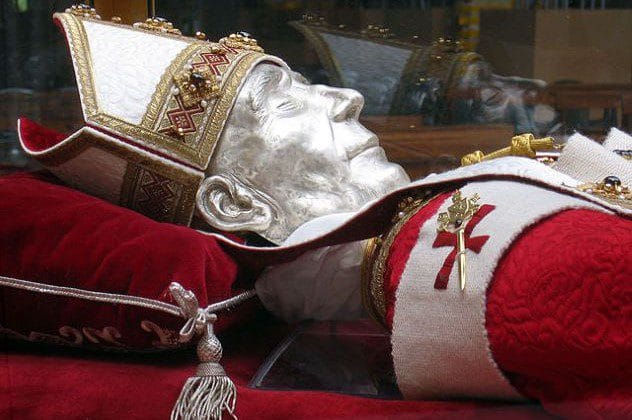Religious relics hold immense significance for believers, seen as sacred objects that bridge the gap between the earthly and the divine. Throughout history, these objects have been venerated across various religions. One would expect these items to be safeguarded, but their value often makes them targets for theft. Where profit is possible, some are willing to risk divine retribution to steal them.
Here are ten instances where religious relics were stolen throughout history.
The Holy Foreskin
Holy relics in Catholicism were believed to grant miracles. Objects associated with saints, especially parts of their bodies or items connected to Jesus, were highly prized. One such relic was the Holy Prepuce, the foreskin cut off Jesus during infancy. Multiple churches in Europe claimed to possess it.
One of these foreskins was housed in a golden cross in Rome until the city’s sack in 1527. Later, it was moved to Calcata and displayed annually. However, in 1983, the parish priest announced its disappearance, claiming thieves had stolen it from his home.
Some speculate the Church itself might have been involved, as the veneration of Jesus’ foreskin had become an embarrassment. The truth remains unknown, possibly lost forever.
Temple Menorah
The Arch of Titus in Rome commemorates Titus’s victory over Jewish rebels and the capture of Jerusalem in 1st century AD. One panel depicts soldiers carrying a seven-branched candelabrum, the menorah from the Temple of Jerusalem.
According to the Hebrew Bible, it was made of solid gold and burned with consecrated olive oil. The Babylonians had previously stolen menorahs from the first temple. After its display in Rome, the menorah’s fate is uncertain. It may have been displayed in Rome’s Temple of Peace and destroyed when that temple burned down. However, some claim the Vandals later stole it during their sack of Rome.
A Holy Bell
Loch Shiel in Scotland was home to a bell on St. Finan’s island, potentially a thousand-year-old artifact. In 2019, it was stolen and has not been recovered.
Security was minimal: the bell was attached to the altar of the ruined church by a lavatory chain, later replaced with a stronger bronze one. The thief still managed to steal it, likely using tools. The island’s remoteness means the exact date of the theft is unknown.
This was not the first time the bell had been removed. During the 1745 Jacobite rebellion, a British soldier stole it, but he was caught and punished, and the bell was returned. Locals believe the bell returned on its own accord. Whether it will be miraculously restored this time remains to be seen.
Relics of St. Wolfgang

On October 26, 2020, thieves broke into the Church of St. Wolfgang in Regensburg, Germany. They targeted a statue of St. Wolfgang, smashing the glass and steel container to steal bone fragments and other relics of the saint.
St. Wolfgang, a popular 10th-century bishop, was canonized soon after his death. Numerous miracles were attributed to him, including tricking the Devil into building a church. The thieves’ motives for stealing the relics remain unknown.
Dozens of Hindu Idols
The antiquities market is thriving, with artifacts worth millions sold at auction houses and displayed in renowned museums. While many items have clear origins, others emerge with vague histories and questionable sources.
In 2023, police searched the home of Shobha Durairajan in India and found 55 Hindu idols, some dating back to the 10th century. These are believed to have been stolen from temples. Durairajan claimed to have purchased them from Aparna Art Gallery, run by Deenadayalan, who has been accused of smuggling ancient objects. The hope is that these statues can be returned to their rightful places.
Nepalese Gods
Even renowned museums can inadvertently acquire stolen religious items. In the 20th century, many museums purchased objects with dubious histories to build their collections. The Metropolitan Museum in New York has had items seized to be returned to their countries of origin.
In the 1980s, a statue of Shreedhar Vishnu disappeared from the Nepalese village of Bungmati. A decade later, a similar statue was donated to the Metropolitan Museum. In 2021, internet sleuths connected the two, leading to the statue’s removal from display. There is hope that it will soon be returned to its original location.
Buddha’s Relics
Buddhist societies build Stupas to house relics of important figures, providing locations for meditation and rituals. The most significant relics are those of the Buddha himself. After his cremation, his teeth and bone fragments were distributed, with many places claiming to possess a portion of his remains.
In 2013, a golden urn said to contain Buddha’s hair, bones, and teeth was stolen from a shrine in Udong, Cambodia. The theft sparked public outrage, leading to a nationwide hunt. In early 2014, police found the urn and arrested a suspect. All those arrested were found guilty and sentenced to seven years in prison, and the relics were returned with increased security.
Pope Celestine V

Pietro Angelerio, later Pope Celestine V, had an unusual papal career. A humble ascetic, he was chosen as pope after a contentious election in 1292. After two years of deadlock, Angelerio’s letter urging the cardinals to act prompted his unexpected selection.
Celestine V, lacking the skills to govern, resigned after just five months. He attempted to return to his hermitage but was drawn back into papal matters. His remains were initially placed in a silver coffin, stolen in 1529 and replaced. In 1988, thieves stole the pope’s remains themselves, but they were recovered from a graveyard hidden in a wooden box.
Celestine’s remains are now in L’Aquila, his face covered with a silver mask, hopefully safe from future thefts.
Relics of St. Foy
Relics were crucial to the medieval church, drawing pilgrims and their wealth. This competition led to “furta sacra,” or holy theft.
Saint Foy, a 3rd or 4th-century Christian, was martyred for refusing to sacrifice to pagan gods. Her remains were placed in a shrine in Agen, and miracles were attributed to her relics, enriching the church. Monks from Conques sought a piece of this income. One monk infiltrated the Agen community, became a priest, and stole St. Foy’s relics, bringing them back to Conques, where they remain today.
Jesus’ Blood
Modern relic thieves often seek monetary value rather than holiness. In 2022, thieves broke into Fécamp Abbey in France, stealing glittering treasures. Among the loot were two vials said to contain Jesus’ blood from the crucifixion.
Realizing what they had taken and likely struggling to sell the items, the thieves contacted Dutch art detective Arthur Brand, offering to return the stolen goods. Brand instructed them to leave the items on his doorstep, where he found them.
Religious relics, revered for centuries, continue to be targets for theft due to their historical, religious, and monetary value. These stories highlight the complex interplay of faith, greed, and history, reminding us of the ongoing struggle to protect these sacred artifacts. Each case is a unique tale of daring heists, unexpected recoveries, and the enduring allure of the divine.
What do you think about these thefts? Leave your comment below!










